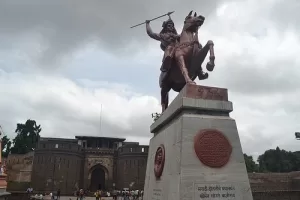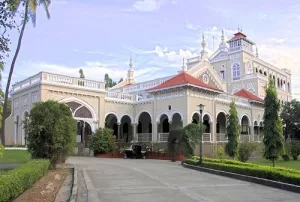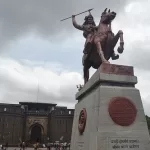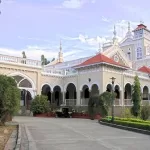– by Akash Pharande, Managing Director – Pharande Spaces
Pune is renowned for its rich history, culture, and tradition, and is often referred to as the cultural capital of Maharashtra because of the multitude of cultural activities and events taking place throughout the year. As every Puneri will vouchsafe, living here offers a unique cultural experience that is difficult to find in other parts of India.
But is a city’s traditional ethos more than just a feel-good factor? It certainly is – and it positively impacts real estate demand there.
Naturally, a city’s ability to attract tourists is good for its hospitality sector, but hotels aren’t the only real estate asset class that benefit from a strong traditional heritage. It also ensures consistent demand for rental homes, and even attracts homebuyers from other cities who are drawn to the city’s traditions-rich vibe.

(Image source: Wikipedia)
Pune was a center of power and culture for centuries. The city’s historical landmarks, such as the Shaniwar Wada and Aga Khan Palace, attract tourists from all over the world. he city is famous for its well-preserved historic buildings and architecture, which create attractive and unique streetscapes and also increase property values in the surrounding areas.
Pune is also known for its vibrant music scene. The city is famous for its classical music and has produced some of the greatest musicians in India. Classical music concerts and festivals are held throughout the year, attracting music lovers from all over the country.
A city’s traditional quotient creates a sense of community and identity among residents, resulting in a higher sense of pride and attachment to the area. Pune has many such areas which remain perennially attractive because they are steeped in a cultural ethos.
A strong cultural foundation imbues a city with a unique character and charm that sets it apart from other cities, and delivers a distinctive living experience. Cultural amenities like museums, art galleries, performing arts venues and historic sites add to the quality of life for residents and make the city desirable to homebuyers from other cities.
Tradition also means other things apart from a strong spiritual ethos and cultural landmarks. A city can be traditionally known for aspects like the quality of education available there. And, in fact, one of the most prominent cultural values in Pune is its emphasis on education.

(Image source: Wikipedia)
Known as the Oxford of the East, Pune is home to several top educational institutions, including the University of Pune, the Film and Television Institute of India, and the National Defence Academy. Every year, Pune’s educational institutions traditionally attract students from all over the country.
This not only creates a diverse and intellectually stimulating environment but also sets the tone for its cultural events and activities, which often focus on literature and art.
Finally, Pune is known for its warm and friendly people. Puneris are known for their hospitality and welcoming nature, making it easy for newcomers to feel at home. The city’s diverse population also creates a sense of cultural acceptance and tolerance, making it an ideal place for people from all walks of life to live.
All of such traditional and cultural highlights add up to a powerful package which has direct correlations to property demand. While the city’s long-standing residents cannot imagine living anywhere else, Pune’s unique cultural background also makes it a most sought-after city to relocate to, and a second-home destination without parallels.
About the Author:

Akash Pharande is Managing Director – Pharande Spaces, a leading real estate construction and development firm famous for its township projects in West Pune and beyond. Pharande Promoters & Builders, the flagship company of Pharande Spaces and an ISO 9001-2000 certified company, is a pioneer of townships in West Pune.
“This content is provided by the company and the website will not be responsible in any way for the content of this article.”



